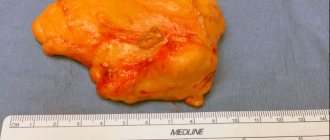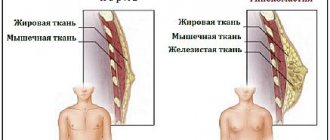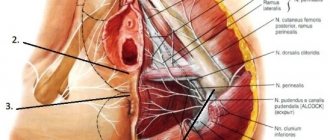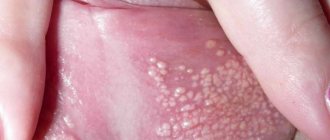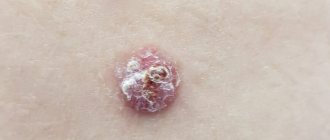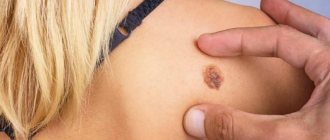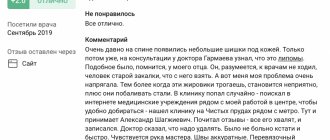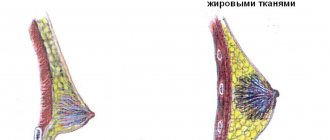Almost any burn or injury results in scarring
, which often look unsightly or even impede movement.
Removal of such deformities constitutes a separate area of plastic and reconstructive surgery. As in any field, scar plastic surgery has its own characteristics and secrets. For our readers, we would like to give a detailed account of how and in what cases scar deformities are eliminated. Today we are talking with a plastic surgeon, Doctor of Medical Sciences Natalia Alekseevna Vaganova
, who worked for many years in the Department of Reconstructive and Plastic Surgery of the Institute of Surgery named after. A.V. Vishnevsky.
Natalia Alekseevna, tell us about your experience - how many years have you been involved in the surgery of post-burn scars and how many operations have you performed?
At the Institute of Surgery. A.V. I have been working at Vishnevsky for 28 years. And all these years I have been dealing with post-burn and post-traumatic deformities. She started as a resident at the department of trauma and burns. She also studied graduate school there. Then she was added to the staff.
What problems do patients come to you with?
The main direction of our activity is the elimination of post-burn and post-traumatic deformities and contractures. We do not operate on patients admitted with fresh burns. For this purpose, there is a special department for acute burn injury, where the skin is restored and autodermoplasty is performed. But over time, rough keloid scars, cicatricial deformities and contractures form at the site of burn wounds. This is already an area of our competence.
What other problems, besides post-burn and post-traumatic scars, do you solve?
With more complex extensive burns, patients develop various restrictions on the function of movement - contractures. For example, adductor contractures of the shoulder joints, flexion contractures of the knee joints, fusion of the fingers (formation of syndactyly), cicatricial eversion of the eyelids. Such operations are performed first.
In general, if we systematize, we deal with plastic surgery and treatment of all types of scars: burns, post-traumatic, postoperative, we treat keloid scars, we also carry out surgical excision of tattoos...
Let's say the patient had a burn or injury. How long after restoration of the skin after a burn can I come to you for reconstructive surgery?
We usually see patients after 10-12 months, as during this time the scars go through certain phases of maturation.
The first stage is when the scars are bright red, accompanied by itching and pain. In this case, the patient is prescribed physiotherapeutic treatment: ultrasound with hydrocortisone, electrophoresis with Fermenkol, lidase, hydrogen sulfide baths, etc. A year later, when the scar tissue has matured and the scars become flatter and more elastic, we begin surgical treatment.
If we are talking about eversion of the eyelids, then such operations are performed 3-4 months after the acute injury. Since the patient’s eye mucosa suffers due to cicatricial eversion of the eyelid. We also try to eliminate joint contractures at an earlier date due to the development of ankylosis - joint stiffness. Subsequently, we eliminate scar deformities with excision of scars.
Can you say approximately how many operations you have performed during your professional career?
I think several thousand. But I don’t keep an exact count.
Tell us a little about the Institute itself. A.V. Vishnevsky
The Vishnevsky Institute is the country's leading base for the treatment of post-burn and post-traumatic deformities. A lot of research work is being carried out at the institute. We not only operate, but also actively engage in science. On the basis of our department, I defended my candidate and doctoral dissertations. The main direction of my scientific work was the development and implementation of the method of balloon tissue stretching to eliminate post-burn and post-traumatic scar deformities. Our department was the first in the country to use this method.
Consultation with a specialist:
Let's talk about these methods then. What is balloon stretching?
The main problem that arises after extensive burns and injuries is the lack of healthy, undamaged skin. To restore the skin, we implant balloons under healthy areas of the skin, which we gradually stretch, and healthy, undamaged skin stretches along with them. The process is reminiscent of the gradual stretching of the skin on the belly of a pregnant woman. The tissue stretching process takes 1-2 months. Plastic surgery is then performed using pre-stretched tissue.
And all this time the patient must remain in the clinic?
The patient can be discharged home or remain in the hospital. During this period, we inject sterile liquid into the expander through the valve tube. Expanders come in various volumes - from 20 to 1200 ml. Depending on the location, the intensity of tissue stretching also varies. For example, when eliminating scarring baldness, the hair-bearing tissues of the head stretch better due to good blood supply. We perform tissue stretching every other day, and sometimes daily. And in implanted expanders on the lower extremities, where the blood supply is much worse, tissue stretching (injection of sterile liquid) is performed 1-2 times a week.
Is this balloon stretching only applicable to post-burn deformities?
This method allows you to eliminate not only post-burn, post-traumatic deformities, but also the method is applicable in reconstructive plastic surgery for oncology. When reconstructing the breast after a mastectomy (partial or complete removal of the breast due to cancer), we implant an expander under the scar tissue, which gradually stretches it. We install a breast implant into the formed pocket. Due to damaged and thinned tissues (radiation, chemotherapy), tissue stretching is performed much less frequently. Therefore, in such cases, we perform stretching once every 2-3 weeks. The entire cycle takes up to several months.
What other scar treatment methods are there besides balloon traction?
There are surgical methods: plastic surgery with local tissues, patchwork plastic surgery, combined plastic surgery and conservative treatment.
Sign up for a free appointment:
What is the algorithm for admitting a patient to you?
We perform planned reconstructive surgery after injuries and burns. Patients come to us 6-12 months after injury. But sometimes there are those who come decades later. For example, a person lived with contracture for a long time, and then decided to get rid of it. Of course, it is better to do everything in the early stages (up to 2-3 years). Especially contractures. If a joint does not work for a long time, stiffness develops, which we have already discussed. We encourage all patients who have suffered post-burn injuries to undergo a consultation with us in order to outline a plan for reconstructive operations at an early stage.
The most common causes of scar deformities of soft tissues are burns. How difficult are operations to correct the consequences of burns and what are their features?
These operations can be multi-stage. We usually receive patients with combined injuries - for example, lesions of the face, neck, chest wall. The patient himself sets priorities, which areas to operate on and in what order. The interval between surgical operations is 4-8 months. As a rule, we first make corrections in open areas of the body, and then restore functionally active areas (joint contractures).
Does one surgeon operate or several?
Two people operate - a surgeon and his assistant. In one stage, it is sometimes possible to eliminate several problems: contractures of the elbow, shoulder, and wrist joints.
Tell us more about planning the operation. How do you determine what fabrics you will use for plastic surgery?
We mainly use nearby fabrics. If these are complex contractures, then we use patchwork plastic surgery (lingual, trapezoidal flaps). Local means fabrics in close proximity.
If there is a very large shortage of tissue, we use combined plastic surgery - we use both local tissue and tissue from other areas (we use donor flaps). Donor flaps are usually taken from the groin area or the anterior abdominal wall. If we are eliminating cicatricial eversion of the eyelids, then we use the inner surface of the shoulder as a donor area - the skin here is usually identical in texture and color. We apply cosmetic sutures to the donor wound.
Are there ways to increase the volume of skin grafted?
Yes, they do exist. Transplantation of skin flaps with perforation is used. For extensive burn wounds with an area of more than 30%, perforated split skin is used. They take a donor flap of skin from the thigh, perforate it, and this mesh is placed on the wound.
The plasticity ratio can be 1:3, 1:4 and even 1:6. That is, with this perforated mesh flap you can restore an area 3, 4 or even 6 times larger than with regular skin.
Many clinics offer laser resurfacing as a method of scar removal. Does this work in the case of post-burn and post-traumatic deformities?
We never polish off extensive burn scars. Especially if there are contractures. In such cases, it is necessary to surgically replenish the skin deficiency. Single small scars - you can try to remove them with laser resurfacing, but the effect is not guaranteed.
Do you take primary burns?
No, as I already mentioned, we deal with deferred operations. Seriously ill patients with burns are admitted to other departments. There they are treated according to quotas and appropriate methods. We are already working with existing problems, which are being dealt with as planned.
As a specialist in the treatment of burn injuries, give advice to our readers: what to do in case of a burn? What should be the first aid?
For some reason, such “folk” methods are very common among ordinary people - treating the burn with oil or sour cream. So this cannot be done. The burned area should be immediately cooled with cold water or ice. Then apply an aseptic bandage. In the simplest case, a sterile bandage can be moistened with chlorhexidine. The main thing is not to smear anything, as otherwise heat transfer will slow down and swelling will increase.
Let's also touch on keloid scars. Why do they arise?
There is a group of patients who, for unknown reasons, have a tendency to keloidosis, when a rough scar develops at the site of any wound or scratch. Scars are accompanied by pain, itching and redness. At the first stage, we treat them conservatively: electrophoresis with fermenkol, ultrasound with hydrocortisone, magnetic therapy and diprospan injections, and we prescribe wearing compression garments. If this does not produce results, then we move on to surgical methods, and then apply physical therapy. A tendency to keloidosis can appear on any scars: burns, postoperative, post-traumatic.
Frequent “suppliers” of keloid scars are third-degree burns. These are quite deep burns, but with the preservation of the growth zone, such burns heal on their own. The patient is happy - he did without surgery! But then very often keloid scars form at the site of such burns, which require surgical correction.
There is such a defect as post-burn syndactyly (fusion of fingers and toes). Can I contact you with this problem?
Yes, we treat such patients. We use both local plastic surgery and combined plastic surgery using skin from donor areas. But we only work with adult patients over 18 years of age.
Natalia Alekseevna, thank you for the conversation. We tried to consider all options for scar deformities that may require treatment and present our readers with modern correction methods. However, we still hope that injuries and burns will not affect them. Take care of yourself!
Types of burns
The critical temperature level at which thermal tissue damage develops is considered to be 43 degrees. Most burns occur at temperatures between 100 and 200 degrees when the skin is exposed for more than one second. Burns received in work shops, during a fire or combat operations, where temperatures can reach 1000 degrees, are especially dangerous.
Superficial burn 1st level
Damage affects only the upper layers of the epidermis. At this level, only redness of the skin is noted. As a rule, a scar does not form.
Superficial burn level 2
All layers of the epidermis are affected, as well as the papillary layer of the dermis. A level 2 burn results in severe redness of the skin and blisters may be present. Under favorable healing conditions, a normotrophic scar is formed, similar in color and elasticity to healthy skin. However, if the wound becomes infected and there is additional trauma, there is a risk of the formation of hypertrophic or keloid scars.
Deep burn level 2
All layers of the epidermis, papillary and reticular layers of the dermis are injured. The site of injury turns red and blisters appear.
Deep burn level 3
The burn affects not only the epidermis and dermis, but subcutaneous fatty tissue and hair follicles. Externally, a third-level burn can be distinguished by the pronounced deep nature of the damage - the tissue under the skin is injured, including muscles and ligaments. Healing occurs very slowly, which increases the risk of wound infection, which means the formation of hypertrophic or keloid scars.
Recovery from injury occurs differently for each patient, and various factors can influence the abnormal development of scars.



